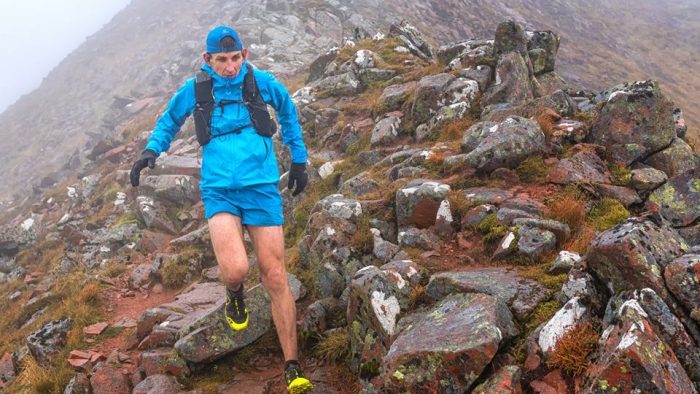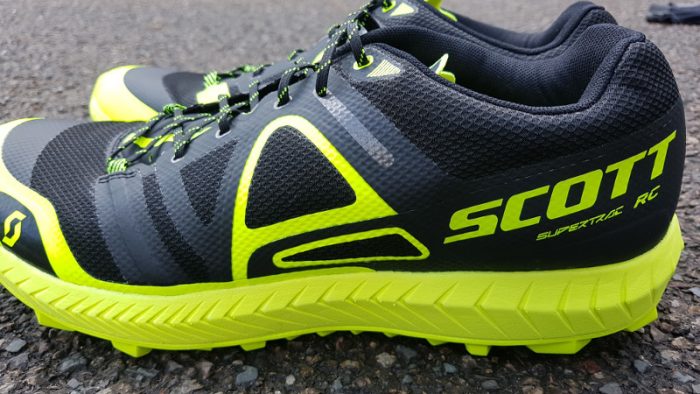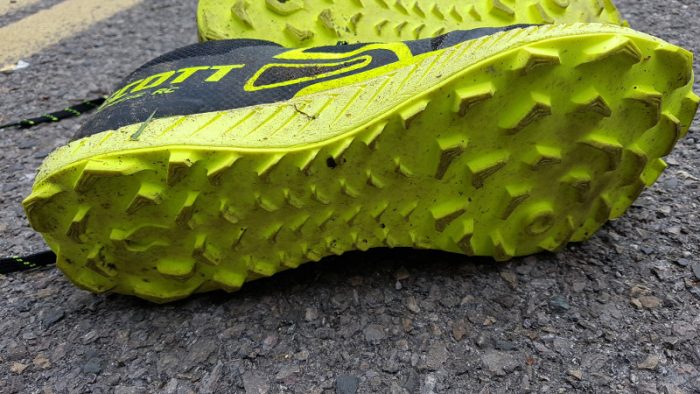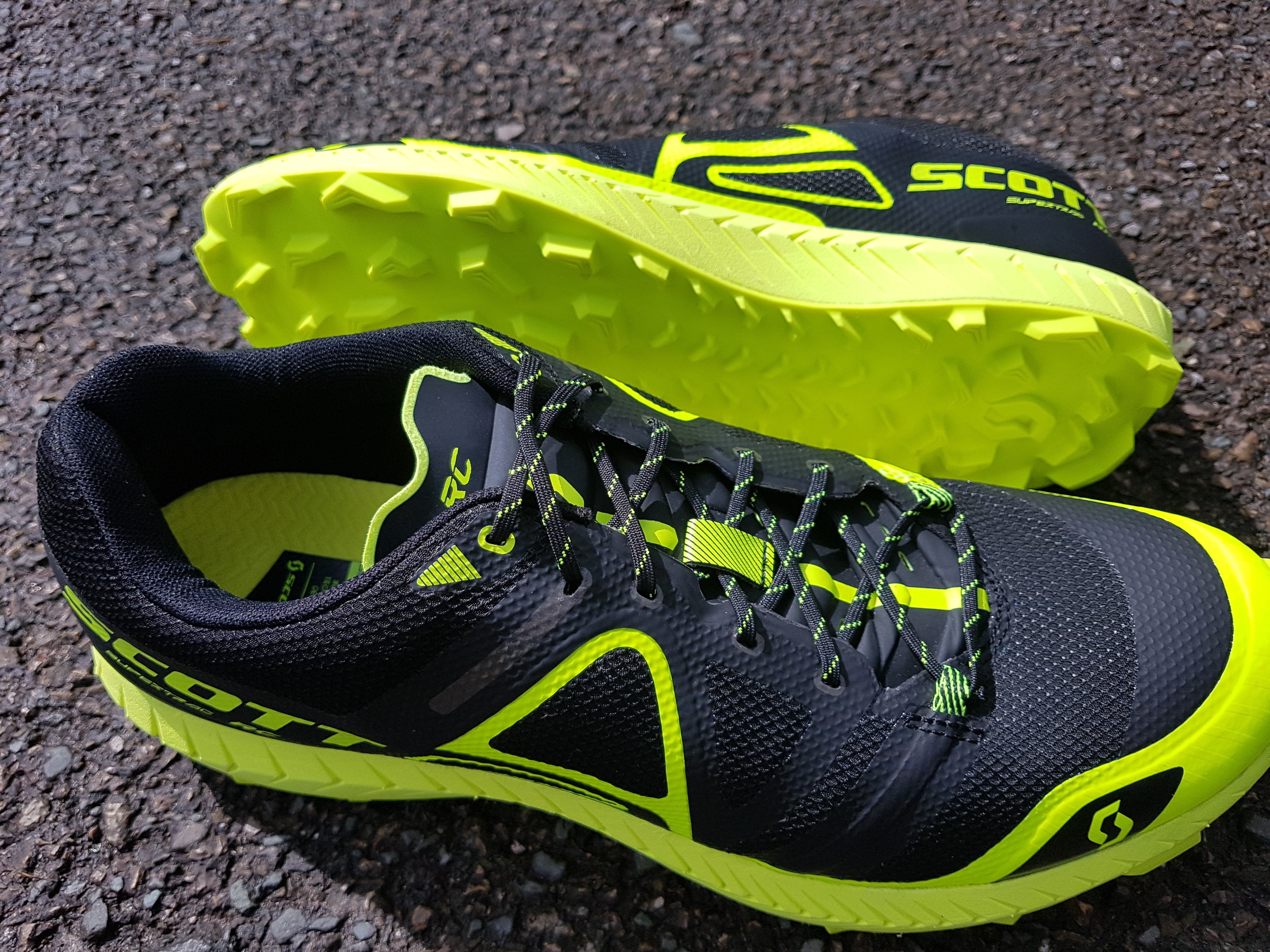Where I’ve used this shoe
I first tested this shoe on a recce of the first half of the Lakes Sky Ultra course where the performance blew me away. I knew it was the shoe I would use for the Skyrunner UK series. Since then I’ve used them in V3K, Lakes Sky Ultra and Salomon Ben Nevis Ultra which are part of the Skyrunner series.
https://www.instagram.com/p/BVXfugojFbn/?taken-by=traillifeuk
I’ve covered about 150 miles with around 14,000m of ascent over mountainous terrain in Snowdonia, The Lake District and the Highlands of Scotland in these shoes. Since I first bought them they have been thoroughly tested in the environment they were intended. Every type of underfoot condition has been encountered from wet rocks on knife edge ridges to deep bogs and forest fire roads to technical grade 3 scrambles with everything in between.



Details
With a 5mm drop, the shoe allows for an efficient mid to forefoot strike and makes them more stable than other Scott shoes which feature a more standard 8mm drop. The RC has plenty of cushioning thanks to Scotts AeroFoam+ mid sole system.
The interesting point on the RC’s is the new 360° grip pattern made in a wet rubber compound and has been refined throughout 2016 with feedback from Scott athletes. The tread is designed for running on trails where rock, whether it be wet or dry, is in abundance. When the going gets really muddy then the shoe does get out of its depth slightly but then again what shoe does work well in these types of conditions?
Upper
Featuring a seamless upper the RC is designed to help prevent blisters from stitching that is common with other makes of shoe. A well protected toe box with a rubber bumper on the front really helps to protect your foot from whatever the mountain can throw at you. As with other Scott shoes, I would like to see this stitched on to help prevent it from being ripped off when I’m tired and I catch my toes on rocks on the trail. There have been no issues so far with this lifting so a minor point.

The fit is much narrower than the usual Scott Kinabalu range I’m used to but the shoe does hold your foot in place nice and tight and prevents it from slipping around on technical terrain. There is adequate padding on the heel of these shoes that helps keep your foot in position.

A non-gusseted tongue does a good job of keeping your foot nice and secure in the shoe, although the addition of a gusset would help keep trail debris out of the shoe. I was a little disappointed in the lack of the usual lace locker that I love from other Scott shoes. It’s a minor thing but it’s a nice feature that I’ve grown to love.

Midsole
Scotts AeroFoam+ used on the midsole of the RC which is coupled with the Scott eRide system. The midsole is based on a rocker deformation that is designed to help athletes transition better to a more mid – fore foot strike. There is a lot of inbuilt flex in the forefoot region that helps to rotate the foot forward to create a better push off. They are a firm shoe but not overly firm. It feels like Scott got the balance pretty much bang on here, especially for someone like me who prefers their shoes to be on the firm side.

Cushioning on the midsole of the RC’s is enough for the shoe to be used for longer distance races, in fact, I used mine on the 73 mile Salomon Ben Nevis Ultra where I found the shoe to be well cushioned and supportive over the distance. I certainly had no issues with blisters or hot spots even after miles of bog trotting and subsequent miles with wet feet.
Outsole
Scott makes no bones about the work that has gone into the sole unit of these shoes. It’s been refined and updated following feedback from their athletes and collaboration with the Technical University of Munich.

The 360° grip system has been developed to provide grip in all directions based on the thinking that in trail and mountain races it is rare for the runner to require grip in a single direction all of the time. Gimick or not you can’t fault the grip on these shoes.

So the big question is does the 360° grip system offer an advantage over traditional sole units? For me, in the right conditions, these shoes take some beating. The grip is phenomenal and combined with the eRide system they really do help to push you onwards over difficult terrain.
My main concern with the sole unit is durability as the lugs. They are very soft and mine are already showing signs of substantial wear. Maybe a version with a harder wearing material in the lugs would make the shoe last a bit longer for us mortals that don’t get a fresh pair given to us at each race. This would also help when the going get muddy as they studs would bite into the softer terrain better.

TRACTION IS DIRECTLY RELATED TO THE KINEMATICS OF RUNNER’S MOVEMENTS. SO THE SHAPE OF THE CLEATS GIVES AN IDEA ABOUT THE FINAL TRACTION BEHAVIOUR AND GRIP OF FOOTWEAR.
PROFESSOR VEIT SENNER, TECHNICAL UNIVERSITY OF MUNICH
